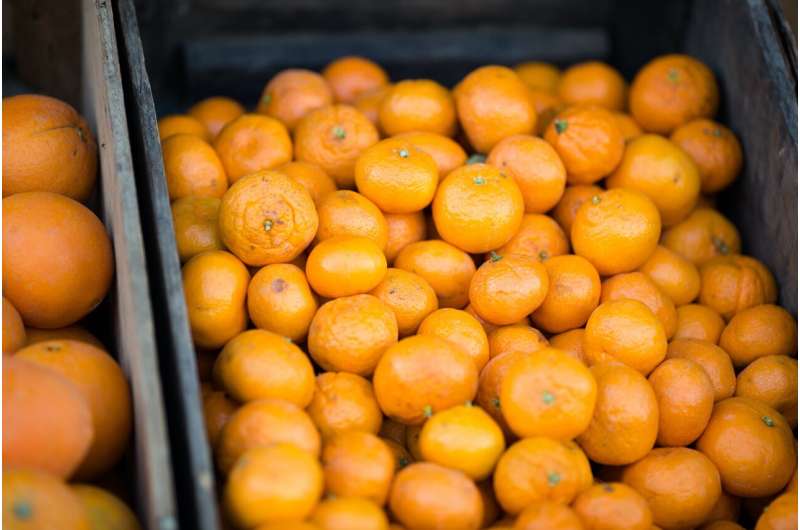How light affects citrus fruit coloration and the timing of peel and flesh ripening

Citrus fruit rind color has long been used as an indicator of ripeness, but for some fruits such as mandarin fruit in the Chongqing region of China, the peel and flesh do not ripen synchronously, with the flesh usually reaching maturity while the peel is still green.
This is a characteristic that seriously affects its commercial value. In new research published in the Journal of the Science of Food and Agriculture, investigators have discovered how red and blue LED light can stimulate color change in mandarin fruit.
Experiments showed that this light exposure causes fruit color change by promoting chlorophyll degradation and carotenoid synthesis. A protein called CcUNE10, which is part of the bHLH transcription factor family, played an important role by binding to and activating certain genes involved in chlorophyll degradation.
"The above results provide a theoretical basis for the further study of the postharvest coloration of mandarin fruit and enhance research on the bHLH transcription factor family's function," the authors wrote.
More information: Functional analysis of the transcription factor CcUNE10 in red and blue LED light irradiation promoted coloration of mandarin fruit, Journal of the Science of Food and Agriculture (2025).
Journal information: Journal of the Science of Food and Agriculture
Provided by Wiley



















